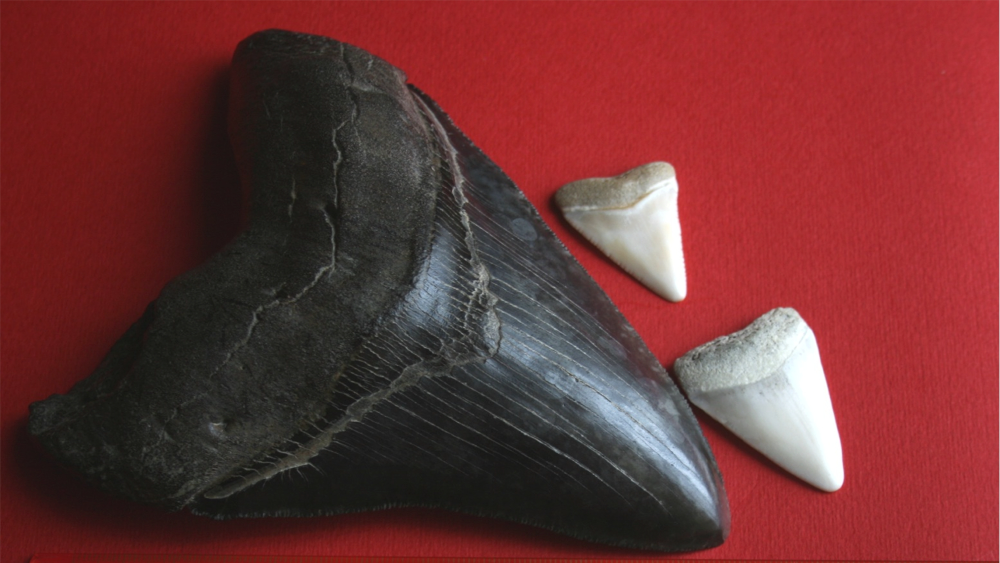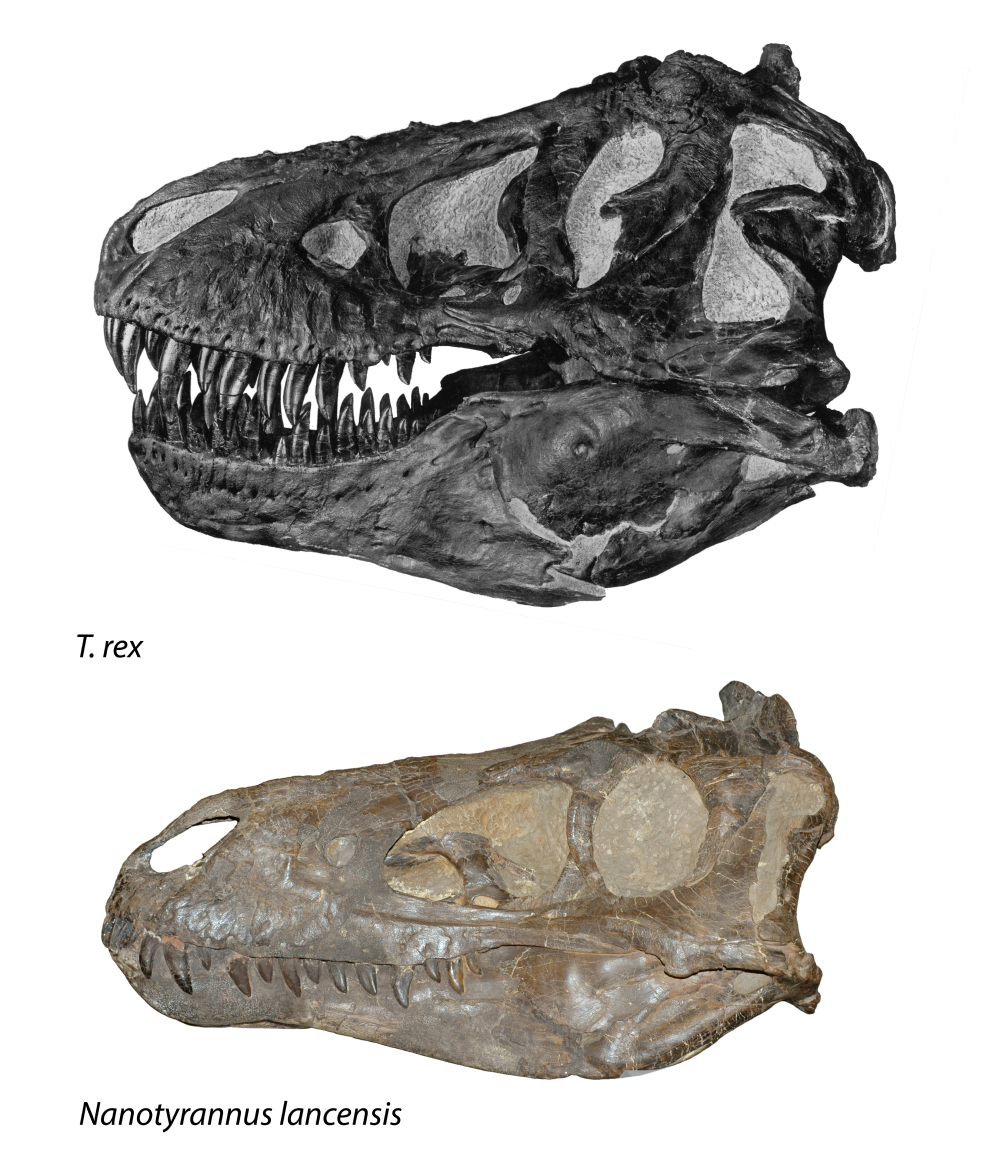It’s a great shame that Tyrannosaurus rex and Otodus megalodon never got the chance to meet. Arguably two of the greatest predators the Earth’s ever seen, they were separated by time and territory as megalodon didn’t appear for over 40 million years after T. rex’s extinction and, well, it was a giant fish (that said, T. rex could probably swim).
Fortunately for us, they’ve been reunited in the realms of science fiction to battle out that age-old question: Megalodon vs T. rex – who would win in a fight? But what if we were to compare them less in terms of their battle tactics and look at what the fossils tell us? I mean, out of the two of them, who had bigger teeth – T. rex, or megalodon?
To find out, I went to the experts. In one corner, we have palaeobiologist Professor Kenshu Shimada of DePaul University, who is interested in the evolution of marine ecosystems over geologic time. His work examines the palaeobiology of sharks and other marine vertebrates that lived during the “age of dinosaurs,” which has revealed a lot of megalodon scoops along the way.
In the other corner: Associate Professor Kristin Brink, a vertebrate palaeontologist at the University of Manitoba who is interested in the evolution and development of teeth and bones. Her work has investigated how tooth composition and growth rate vary in animals, from dinosaurs to lizards and mammalian ancestors.
Biggest Megalodon tooth ever found
The largest megalodons were at least 15 meters (50 feet) long, but a 2025 study (led by Shimada) found that they could have been up to 24.3 meters (79.7 feet) long. We only have scant fossil evidence to go on, so we still don’t really know what they looked like, but it’s thought their monstrous size may have been an adaptation to their cold environment (though as warm-blooded animals, it may have also been the root of their demise).
The tallest known teeth slightly exceed 16cm in height.
Prof Kenshu Shimada
According to the Natural History Museum, London, their jaws were wide enough to swallow a taxi at 2.7 by 3.4 meters (8.9 by 11.2 feet) wide and lined with 276 teeth. How big were those teeth? Much bigger than any you see in sharks alive today.
“The largest shark teeth in the modern-day world are those of the great white shark, measuring up to about 6 centimeters [2.4 inches] in maximum vertical height,” Shimada told IFLScience. “However, they are dwarfed by the teeth of the megalodon, where the tallest known teeth slightly exceed 16cm [6.3 inches] in height.”

A Megalodon tooth VS those of great white sharks.
Biggest T. rex tooth ever found
One of the largest T. rex specimens in the world (if not the biggest, save for Scotty) is Sue the T. rex, housed at Chicago’s Field Museum. They estimated its teeth to be between 19 to 30.5 centimeters (7.5 to 12 inches) long.
They were likely able to crush bone, whereas the smaller species likely used their teeth for slicing flesh.
Assoc Prof Kristin Brink
That range has a bit to do with the fact that there’s a difference between the length of a tooth that would’ve been showing – called the crown length – and what the total length of it might have been when the root was intact. But according to a 2017 study, recovered specimens suggest that T. rex’s teeth were up to 18 centimeters (7 inches) in crown length, with a volume of 138 cubic centimeters – AKA, the largest teeth of any dinosaur. Megalodon was no dinosaur, but it too is beaten by the mighty gnashers of T. rex.
Why did T. rex have such big teeth, and how did they grow?
An animal’s dentition is a good place to look for clues about their behavior. There’s still much we don’t know about how megalodon lived, but as Shimada told IFLScience, recent studies on tooth-based chemical analyses have shown that megalodons were opportunistic super carnivores. As for T. rex, its big teeth are a reflection of its love of chomping dinosaurs, bones n’ all.
“T. rex teeth are more robust than other smaller theropods and could withstand stronger stresses,” Brink told IFLScience. “They were likely able to crush bone, whereas the smaller species likely used their teeth for slicing flesh.”
It is possible that tooth count stayed consistent or increased and the teeth got bigger through growth in T. rex, like every other reptile, but we don’t know yet.
Assoc Prof Kristin Brink
“There have been some cool studies looking at growth in other theropods, like Gorgosaurus and Albertosaurus, and their teeth get more robust through growth, likely indicating a change in diet when they get larger (a shift from slicing to crushing bone).”
There was a time we thought T. rex followed an unusual pattern (for a reptile) in going down in tooth number as it got bigger. This was because “juvenile T. rex specimens” had more teeth than adult ones, but we recently discovered these juveniles were actually an entirely different species: Nanotyrannus.

A T. rex skull compared to that of Nanotyrannus lacensis.
“Therefore, a lot of the growth trends that had been interpreted for T. rex are now wrong, and we actually don’t know much about baby T. rex,” said Brink. “For example, I was involved with a study looking at tooth counts through growth in many types of reptiles, and all reptiles show an increase in tooth count as they grow up and the jaws get bigger. The only exception was T. rex.”
“So, it is possible that tooth count stayed consistent or increased, and the teeth got bigger through growth in T. rex, like every other reptile, but we don’t know yet. Reptiles, including dinosaurs, continuously replace their teeth throughout life, so each time they shed their teeth is an opportunity for the next tooth generation to be slightly larger.”
So bravo, T. rex. You win this round. And if ancient animal talents is your bag, did you know that woolly mammoths could sense storms with their feet?
Source Link: Megalodon VS T. Rex: Who Had The Biggest Teeth?